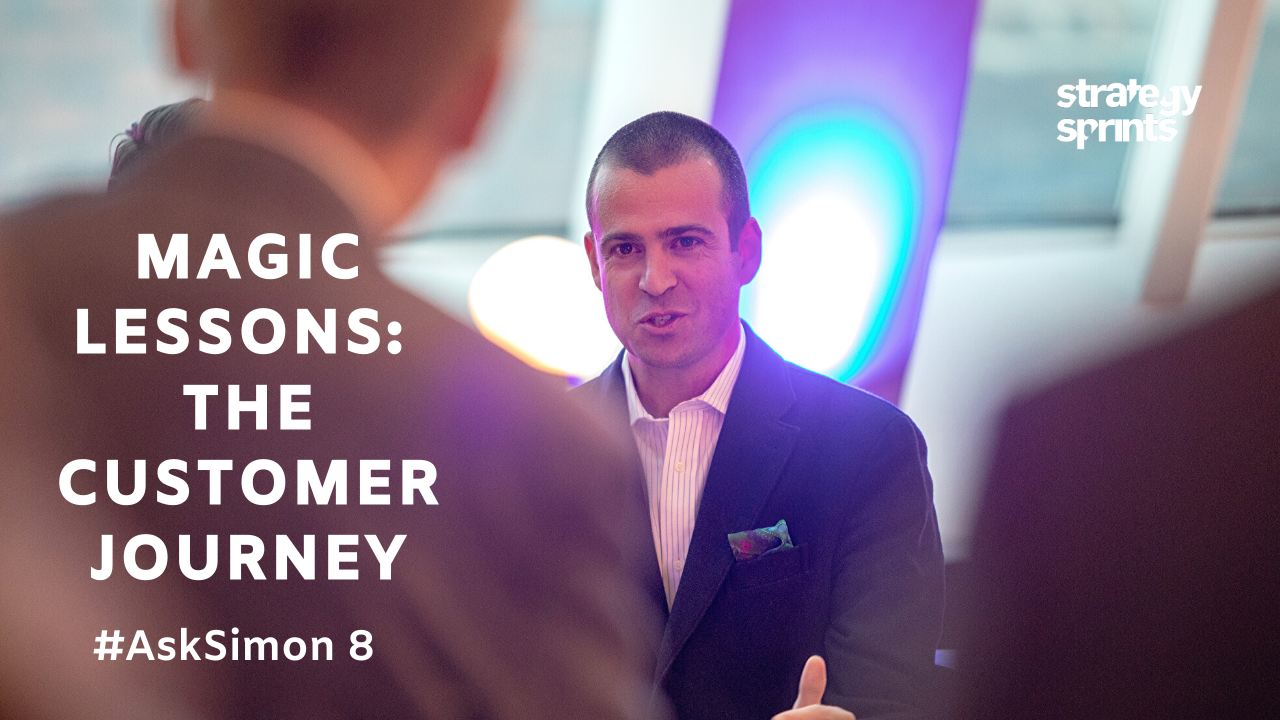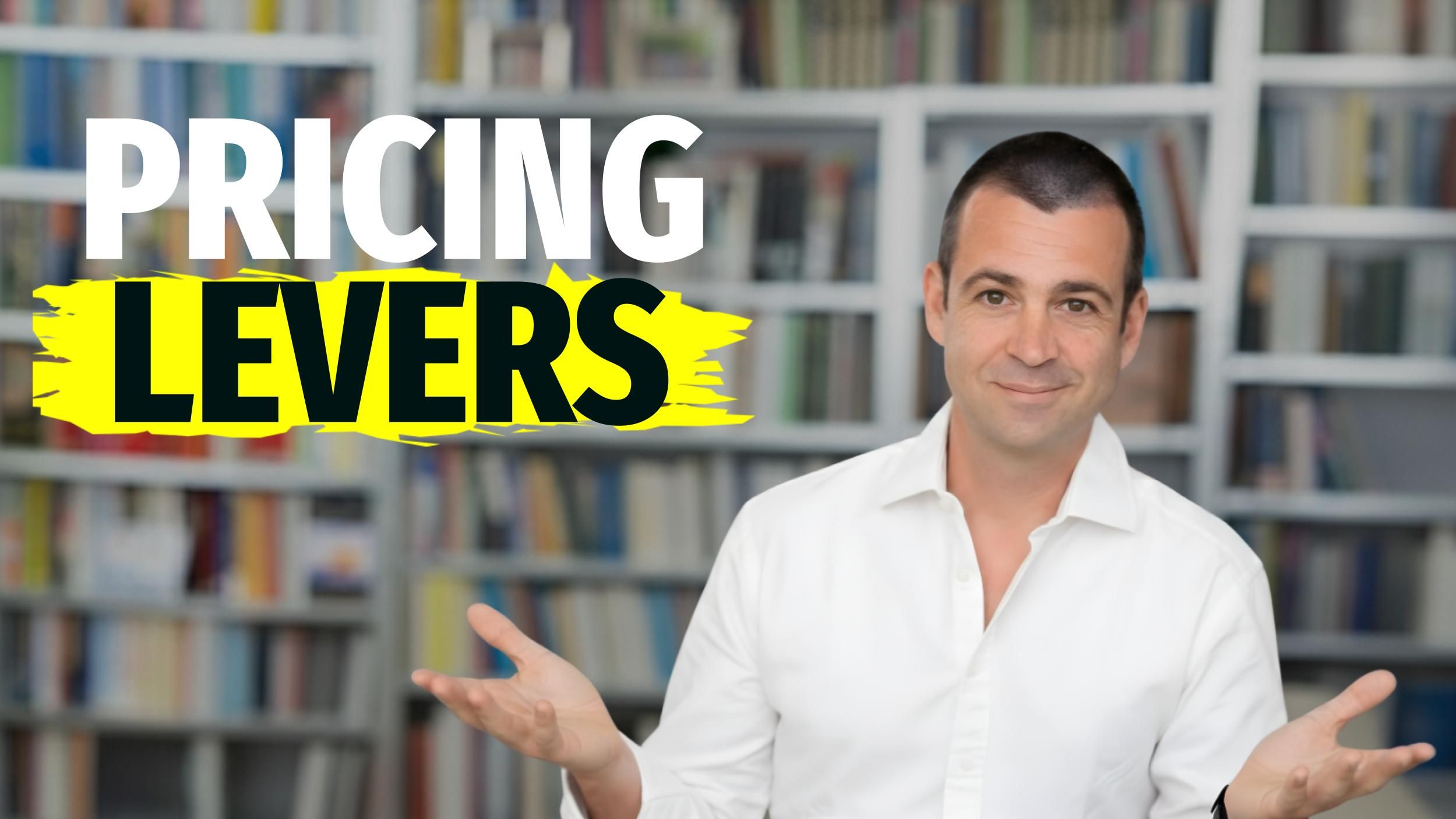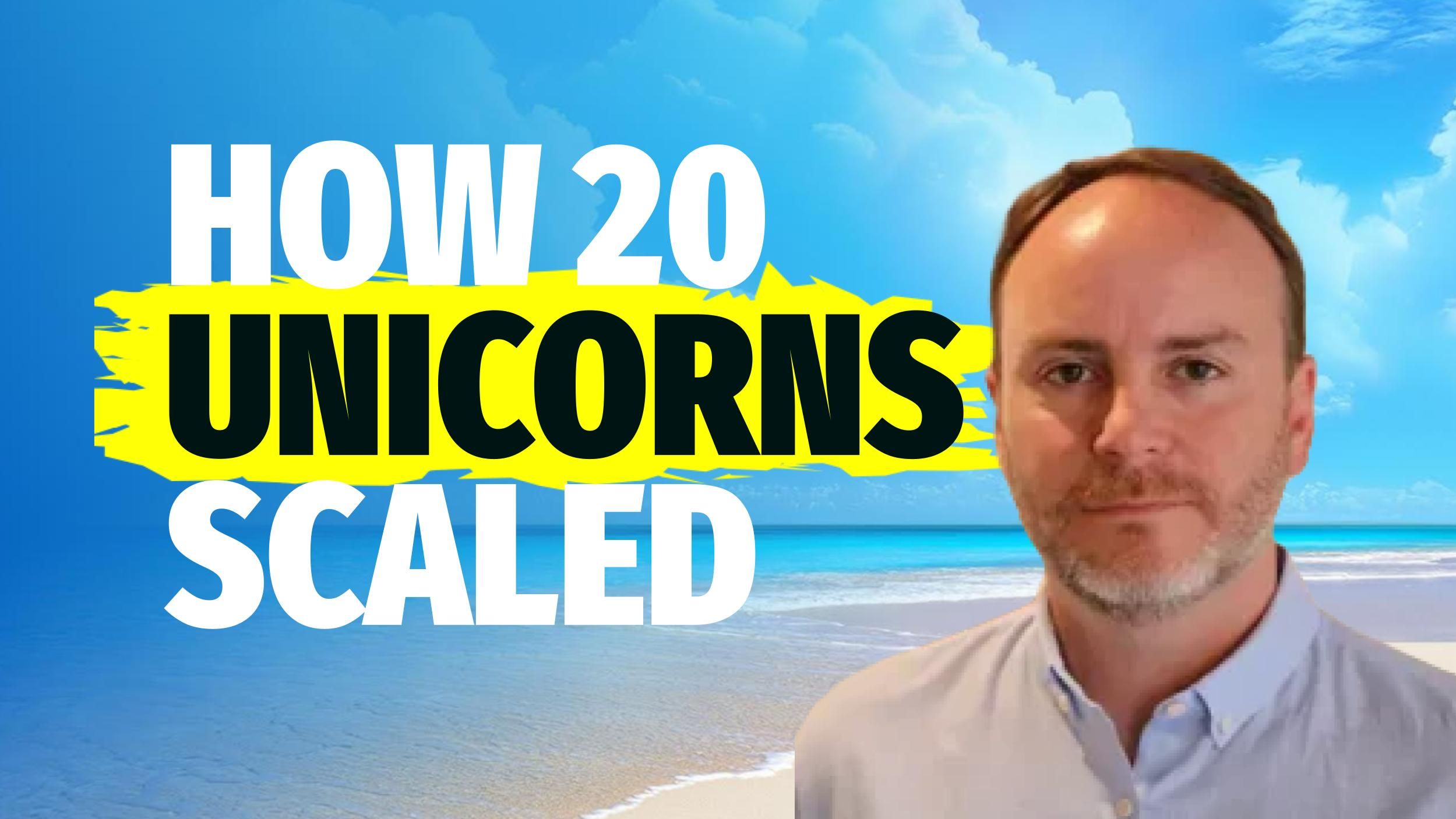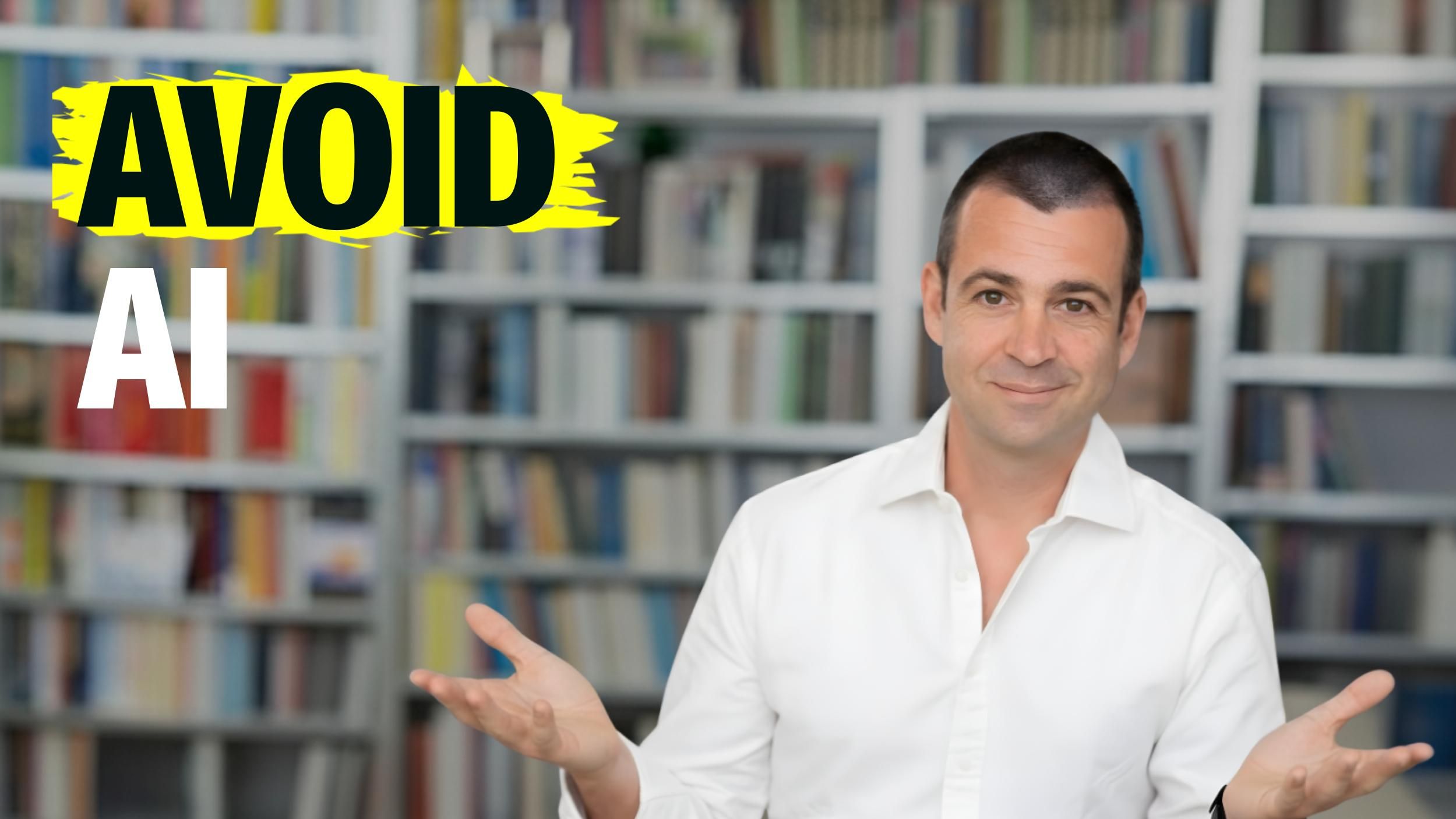
Magic Lessons: The Customer Journey

#askSimon 8
The Customer Journey.
Check out our Podcast and YouTube Show!
Hi Simon, this is Natalie from Miami. I've been having some customer troubles. Sometimes our work together lacks focus. How do you work through this?
SPOILER
There is magic in what you do. Right now!!
It is just about uncovering it. How? With a microscope! Here we go…
YOUR MAGIC (0:25)
The beer brewers of long ago once believed their wooden spoons were magic.
First they'd mix their ingredients. Usually some sort of grain like rice, corn, or barley mixed with hot water.
That would give them a sort of soup, not too unlike a steamy pot full of oatmeal on your stove top.
But if they stopped there, nothing would happen.
The key to making that mixture come to life and become beer was…
The magic spoon.
The brewer would stick the spoon into the hot soup and lo and behold, a few hours later, the soup would begin bubbling.
It's alive!
The soup would turn into alcohol and not long after that, the brewer and their friends and family are dancing around the campfire like there's no tomorrow.
Magic, right?
Not really. Once the microscope was invented, scientists discovered there were actually microscopic yeast living inside the crevices of the wooden spoon.
From then on, yeast became a standard ingredient in brewing recipes.
The yeast was always there, it was just that no one knew about it. It was an invisible ingredient that made the recipe work.
YOUR MICROSCOPE (1:00)
I believe every business has something similar. There are a number of factors that make the business work. You know many of them, I'm sure. But I'm also sure there are many you haven't discovered.
This is why talking to past customers is so important. Those conversations are your microscope. They let you see what was always there, but hidden because you didn't look.
And once you discover these hidden ingredients, you can optimize for them.
The discovery of yeast-led brewing allowed scientists to create new strains, perfectly tailored for each recipe.
When you find what really motivates your customers, you can tailor your marketing to those desires. You double-down on them.
Then, you'll have your own dance party.
THE CUSTOMER INTERVIEW
To validate a Minimum Viable Product (MVP) we use the 10 steps of our “Eyebrow Test Checklist”. You can read the detailed checklist in our Strategy Forum. The 10 steps are:
1. Create a recruiting screener.
2. Publish recruiting screener.
3. Select and schedule 5 participants.
4. Start creating the interview guide (consider if it is a problem interview, a solution interview or an MVP interview).
5. Confirm participants.
6. Finalize interview guide.
7. Review the prototype with your team.
8. Set up test devices and recording system.
9. Interview the five participants.
10. Summarize findings and plan next steps with your team.
“Stop wasting money on surveys! Test with 5 users instead” - Simon Severino
Here’s the facilitator template we use to teach our clients how to test fast and lean: Facilitator Template.
HOW TO DECIDE WHAT TO TEST:
What should you test first?
Many advisors prioritize by risk degrees. Our experience is different.
In our programs we recommend to test based on this logical order:
1. Customer Segmentation (5 Levels).
2. Unmet Needs.
3. Your Offering.
4. Your Positioning.
5. Your Solution (MVP).
THE 3 STEPS CUSTOMER JOURNEY (YOUR MICROSCOPE!)
Your microscope is understanding what your customer experiences while interacting with you. (1:40)
These are some templates we built for the entrepreneurs in our 90 day programs to help them identify fast and scalable growth opportunities. Feel free to use our templates, you can download them at strategysprints.com/tools. And find our programs as Strategysprints.com/apply.
STEP ONE - IDENTIFY THE MOST CRITICAL INTERACTION MOMENT (1:55)
Of all the touch points between the user and your solutions, which one is the most important?
Identify it and describe it.
Example: When a customer uses the Mailchimp software to send a newsletter for the first time, the anxiety level is high (“Did I leave some typos? Do all the links work properly?”). In this case we would note on the template that the emotional need is “reassurance”.
STEP TWO - WHAT HAPPENS RIGHT BEFORE? (2:13)
From the perspective of the user (and this, for many teams, is a win in itself - empathizing with the user), what happens right before that? Mailchimp tested a Chimp hand that is sweaty to create an emotional connection. The signal for the user is “I see you”, “It’s ok to be afraid right now”.
STEP THREE - WHAT HAPPENS RIGHT AFTER IT? (2:20)
Right after the user clicks the “send” button, the same chimp hand reappears, this time no sweat, but HIGH-FIVING. This gives positive reinforcement exactly in the moment where the user needs it. The internal monologue is “Oh my god, did I sent a broken link or typos?” and the intervention is “Congrats! You did the right thing”. A very well designed customer journey in the “Fulfillment” area.
STEP FOUR - BUILD AND TEST (3:09)
After having identified the critical touchpoint, ideate a possible intervention and build it quickly so you can test it in the next sprint! Feel free to use our templates, you can download them at strategysprints.com/tools.
See you soon!
Keep Rolling
Simon Severino, CEO Strategy Sprints GmbH
P.S. Want to go from stressful and manual to scalable and self-adapting? Join our Entrepreneurial Freedom workshop at StrategySprints.com/workshop. Can’t wait for you to join us!
Get our expert sales tips delivered
By submitting you agree to receive our weekly Strategy Sprints Newsletter as well as other promotional emails from Strategy Sprints. You may withdraw your consent at any time via the “Unsubscribe” link in any email or view our privacy policy at ant time.










